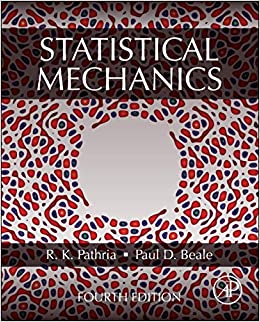Study the Heisenberg model of a ferromagnet, based on the interaction (12.3.6), in the mean field approximation
Question:
Study the Heisenberg model of a ferromagnet, based on the interaction (12.3.6), in the mean field approximation and show that this also leads to a phase transition of the kind met in the Ising model. Show, in particular, that the transition temperature \(T_{c}\) and the Curie-Weiss constant \(C\) are given by
\[T_{c}=\frac{q J}{k} \frac{2 s(s+1)}{3} \quad \text { and } \quad C=\frac{N\left(g \mu_{B}\right)^{2} \mu_{0}}{V k} \frac{s(s+1)}{3} .\]
Note that the ratio \(T_{C} / C V=2 q J / N\left(g \mu_{B}\right)^{2} \mu_{0}\) is the molecular field constant of the problem; compare with equation (12.5.8).
Fantastic news! We've Found the answer you've been seeking!
Step by Step Answer:
Related Book For 

Question Posted:





